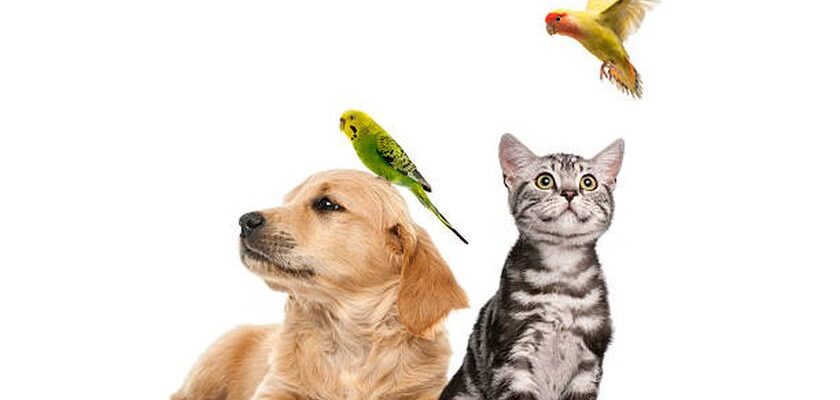Pets have been accompanying humans for tens of thousands of years and undeniably are one of the best things that ever happened to humanity. To estimate the exact number of pets in the world would be next to impossible. However, some sources claim that around 600 million cats are living on the planet today and more than 900 million dogs! The U.S. holds first place among pet lovers: America is number one at owning cats, dogs, and fish.
Studies show that the most popular pet in the world is a dog. Cats are right behind, followed by fish and birds.
In Europe, The World Society for the Protection of Animals (WSPA) performed the largest pet ownership survey in 2008 and established that there are approximately 6.7 million pet dogs and 9.8 million pet cats.
In comparison, despite the dense population in some countries, there aren’t as many pets in households in Asia as there are in other parts of the world. For example, China ranks as one of the lowest pet populations (11 million cats and 26.8 million dogs), while Japan has more pets per capita (9.8 million cats and 13.1 million dogs).
Many African countries hadn’t been adequately surveyed, thus making it difficult to tell the exact numbers. Ethiopia has an estimated dog population of 5 million and just 250,000 cats. South Africans also prefer pet dogs (7.4 million) over cats (2 million).
Australia has heavy restrictions and regulations regarding pets, and Australians own around 3.5 million dogs and 2.4 million cats.
Argentina has the highest pet ownership rates in South America: 80% of the residents polled reported in as pet owners. Brazil comes in at a close second with 75%.
Dogs: brief history and current state of our relationship
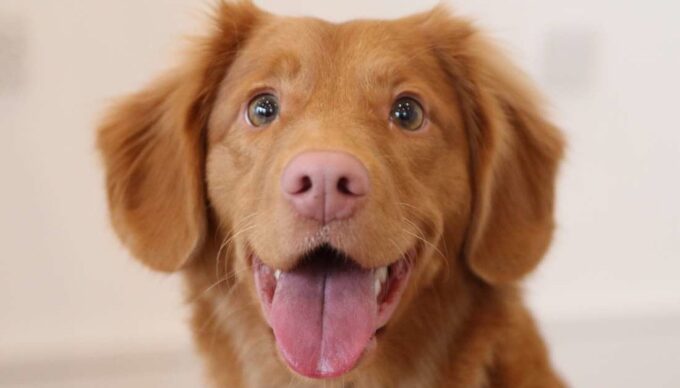
Source:medicalnewstoday.com
Dogs have been an integral part of our lives for a long time. There are several reasons that explain this phenomenon, and the most important one is the level of relationship a dog develops. Moreover, dogs are believed to be the first domesticated animal.
The history of dog domestication relates to the close partnership between dogs (Canis lupus familiaris) and humans. For humans, such a partnership meant help with herding and hunting, transferring information or receiving an alarm in the case of danger, and companionship as we know it today. Dogs, in return, were provided with shelter, a reliable food source, and protection from different factors. But unfortunately, the scientists don’t yet have a conclusive answer to when this companionship first started.
Recent studies on dog history using mitochondrial DNA (mtDNA) show that wolves and dogs split into different species around 100,000 years ago. However, researchers still don’t agree with the results, although these studies suggest dog domestication may have occurred between 40,000 and 20,000 years ago.
In 2016, a research team led by archaeologist Greger Larson discovered two places that might be the potential origin of dog domestication. The first one is located in Eastern Eurasia and the second one – in Western Eurasia. According to that research, ancient Asian dogs originated from a domestication event from Asian wolves at least 12,500 years ago. And European Paleolithic dogs originated from an independent domestication event from European wolves at least 15,000 years ago. Asian dogs were transported by humans to Europe around 6,400 years ago before the Neolithic period, where they displaced European Paleolithic dogs.
This explains why earlier DNA studies reported that all modern dogs were descended from one domestication event that was due to Asian wolves. However, many questions still remain unanswered.
The first domestic dog was found near a burial site in Germany almost 14,000 years ago; researchers have found joint committals of both a human and a dog. Dog remains were discovered in Paleolithic areas in Europe that were the origin of Paleolithic dogs. Chauvet cave in France, Skateholm in Sweden, and Govet cave in Belgium also have proof that humans and dogs interacted throughout history. Research conducted in 2013 took DNAs of 126 modern wolves and dogs and 18 fossils for comparison. It was discovered that the modern DNA was close in structure to European fossils, meaning that Europe was populated with species close to modern dogs, but it wasn’t true for Asian fossils. It implies that Asia had the first domestication of dogs, as stated above.
A study of pieces of DNA called SNPs (single-nucleotide polymorphism) published in 2012, which have been identified as markers for modern dog breeds, showed that despite the clear evidence for marked size differentiation in very early dogs (e.g., small, medium, and large dogs found at Svardborg), this has nothing to do with current dog breeds. The oldest modern dog breeds are no more than 500 years old, and most date only from ~150 years ago.
There are numerous effects of the domestication of dogs that we can see in modern dogs. Their domestication benefited humans in more ways than we thought possible. One of those effects is that dogs have become a companion to humans in a way that many other animals have not. Dogs truly are ‘man’s best friend,’ and although they still are used for their historical purposes, such as hunting, farming, and protection, nowadays, the most common job of a dog is simply to be a family pet. They have become full family members.
Besides that, dogs can help to improve humans’ health and lives. They provide comfort to humans and have been able to help humans overcome their issues:

Source:loveyourdog.com
- Guide dogs who lead visually impaired and blind people around obstacles are the most commonly known type of assistant dogs. Labrador Retrievers and Golden retrievers and their hybrids are usually chosen to be trained as guide dogs, although other breeds can also be well suited to be this type of service dog. According to the Canadian National Institute for the Blind, their services aren’t new: guide dogs have been helping visually impaired people for centuries, and the beginning of it may date back to Roman times.
- Service dogs can also assist people with hearing impairments. Whenever they head a sound – an alarm, doorbell, or a crying baby – hearing dogs alert their handlers by touching them and leading to the noise source. Labradors and Golden Retrievers are also the most popular breeds for this type of service dog. Still, many other breeds, like Cocker Spaniels, Miniature Poodles, and Terrier mixes, have been successfully trained to alert as a hearing dog.
- Mobility Assistance Dogs are trained to help people with a wide range of mobility issues and are trained to perform many different tasks. For example, they can retrieve objects, help their handlers get around, press buttons on automatic doors, serve as a brace for ambulatory people, or even help pull a wheelchair up a ramp. Having a mobility assistance dog helps people with mobility issues to increase their independence and confidence. People with spinal cord injuries, brain injuries, and arthritis are among those who benefit from a mobility assistance dog.
- Diabetic alert dogs alert their humans to chemical changes in blood sugar. Dogs can catch the scent changes associated with hyperglycemic or hypoglycemic events that humans can’t. Diabetic alert dogs alert humans before high or low blood sugar levels become dangerous. After being alerted, people know they need to test their blood. Then they can inject insulin or ingest a dose of glucose. Many of these dogs are trained to alert others in the household or set off an alarm system if their human needs medical help.
- Seizure alert dogs are one of the controversial types of a service dog. Some neurology experts claim that there is no reliable evidence suggesting that dogs can correctly predict seizures. Nevertheless, many patients, families, and trainers insist their dogs do accurately predict and alert to oncoming seizures. This is because they are trained to react with a specific type of behavior right before their humans have a seizure.
- Seizure response dogs (not to be confused with seizure alert dogs) are trained to help people during an epileptic seizure. They can bark for help or press an alarm system during a person’s seizure; they are also trained to get a person out of an unsafe place or bring medication to them when they are coming out of a seizure.
- Psychiatric service dogs assist people who are suffering from depression, anxiety, and – in most cases – post-traumatic stress disorder. These dogs help their handlers feel safer by doing things like entering a building before them or turning the light on. They also help people who get overwhelmed in public spaces by creating a physical barrier between their handlers and other people to give the handlers more personal space. Having a service dog to care for also stimulates humans to take care of themselves.
- Autism support dogs can provide a social bridge for children with autism and help them navigate social settings. These services dogs improve the quality of life for children as they help them not to be isolated and also offer comfort during stressful times. Autism support dogs are trained to watch over children and prevent them from running away or track them if they do.
- FASD service dogs support children who were exposed to alcohol prenatally and were diagnosed with fetal alcohol spectrum disorders (FASDs). Children with FASDs may suffer from physical and mental difficulties and behavioral problems, and learning disabilities. FASD dogs are trained similarly to autism service dogs and can be taught to interrupt a repetitive behavior.
- Allergy detection dogs are trained to sniff out a specific odor and alert their humans – for example, peanuts or gluten. These services dogs are often paired with children to alert them about allergy-inducing smells at school. That way, parents can be more secure about their child’s safety, and children feel more independent.
There are other classes of working dogs, such as therapy dogs or emotional support dogs, although they are not classified as a certain type of service dogs as they are not trained to perform a specific task to help their handler.
The number of good things dogs do for people cannot be measured. None of it would be possible without domestication. It seems that their ancestors made the right decision partnering with humans. A simple exchange of food for protection led us to such a wondrous companionship we have today!
Here’s the list of the most popular dog breeds around the world:
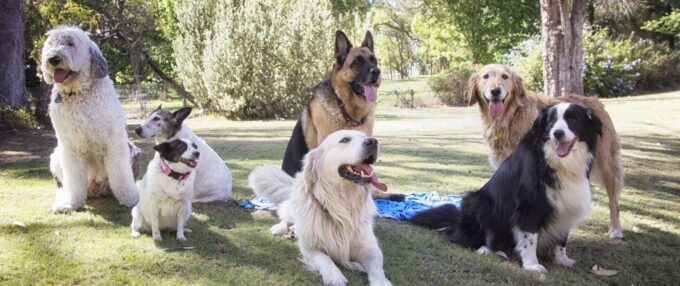
Source:blog.cheapism.com
1. The English Cocker Spaniel is a cheerful and optimistic dog with an extremely playful disposition. Known for its irrepressible energy, Cocker Spaniel is ideally suited for the role of your hunting companion. Many kennel clubs value this breed today for its delightful personality and irresistibly good appearance.
2. Pyrenean mountain dog. Despite their centuries-old history of development, these amazing creatures have only now begun to gain popularity. The Pyrenees breed is able to distinguish itself by excessive intelligence and ingenuity. At the same time, the animal lends itself well to training, development, and training. The Pyrenean dog is an extremely strict but at the same time friendly dog.
3. Bernese Mountain Dog. It is worth admitting that today this breed is quite common. A mobile and robust dog, bred at the beginning of the XX century in the regions of Switzerland, is ideally suited for the role of a universal working assistant. The general temperament of the Bernese Mountain Dog is expressed in the qualities of good nature, calmness, and strength.
4. Malinois (also known as the Belgian Shepherd). It is worth noting that the Malinois breed is only a certain part of the voluminous Belgian family. Dogs of this kind are now widely spread across continents all over the world. Malinois is able to boast positive skills that simplify the process of training and learning. A good memory combined with a sound mind makes this dog an excellent assistant for the cattle business.
5. The Cane Corso is a relatively rare and unique breed dating back to the epoch of ancient times. An interesting fact is demonstrated to us by the literal translation of the name of the family from Latin – “bodyguard.” The Cane Corso was created mainly as a working breed endowed with strong and hardy qualities. The dog is focused more on protecting the owner and their property. This is an ideal assistant endowed with feelings of thoughtfulness, independence, and fearlessness.
6. Doberman. The breed, bred in Germany in the late times of the XIX century, is also included today in the list of the most intelligent and capable dogs. Dobermans, as many know, willingly give in to training with the right approach from the owner. A dog distinguished by loyal, fearless, and vigilant qualities can perfectly cope with the roles of your guard and companion.
7. Rottweiler. Another representative of Germany, originating its history in the XVIII century. Rottweiler can be known in society under the guise of ferocious guard dogs. However, many kennel clubs call these animals devoted protectors and gentle playmates.
8. Australian Shepherds, especially known for their multicolored eyes, are among the few breeds of dogs with a condition of heterochromia. The Australian Shepherd, it is worth noting, was not bred in Australia at all – this breed appeared in the USA at an early stage of the XIX century. The Basque Shepherd breed was brought from the Australian continent, which marked the beginning of a new genus. The Australian Shepherd is a responsible and hardworking animal, endowed at the same time with feelings of tenderness and friendliness. This is an ideal companion who prefers work to simple communication.
9. Cute and fluffy Poodles are a diverse breed, differing in a whole range of indicators of size and color. The poodle, which became widespread in Europe in the XVI century, was initially used under the guise of a hunting dog. Only recently has this breed shifted towards decorative and design purposes. The poodle holds the second position on the list of the most intelligent dogs. This active and attentive animal will be highly interested in everyday interaction with you.
10. Unsurprisingly, this year the Golden Retriever turned out to be the most popular dog breed. This breed, according to statistics, is one of the most common in Europe and the USA. The gold medalist belongs to the genus of hunting dogs bred in England in the XIX century. The Golden Retriever is an ideal hunter endowed with feelings of energy and endurance. However, these dogs have already mastered many other professions in the modern world. So, the breeds of this family successfully work in the ranks of customs services, law enforcement agencies, and rescue teams.
Cats: never tamed, plenty hated and loved
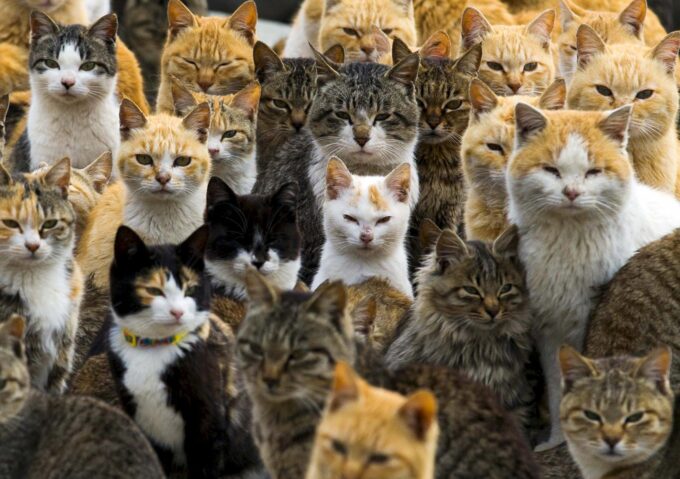
Source:nytimes.com
Just around 70 years ago, few cats were living indoors at all. However, cats have lived outdoor lives for more than 10000 years, alongside birds and wildlife.
Cats and humans began to interact with each other around 10000 to 12000 years ago in a place where the earliest developments in human civilization occurred called the Fertile Crescent – a region that’s located in modern-day West Asia closely. As people began to form settlements instead of leading a nomadic lifestyle, agriculture came to life. Grain attracted rodents, and Middle Eastern wildcats, or felix silvestris lybica, took advantage of this abundant food source that caused them to stick around in the early towns, preying on rodents and scavenging in humans’ garbage.
Thus, humans and cats formed the first mutually beneficial relationship: people kept cats around to protect their crops, cats had plenty of food in turn. It is often said that cats “domesticated themselves” as they began to live alongside humans out of their own volition and adapted new behavioral patterns to continue this new lifestyle. More friendly behavior meant protection from humans and getting table scraps instead of living purely on hunting rats and mice.
The bond between cats and humans grew stronger as cats continued to perform their duties as rodent patrol and grain protectors. Then, in 2004, Jean-Denis Vigne made a significant discovery: on the island of Cyprus were found a grave that dates around 7500 B.C. The remains of the cat were found buried next to its owner. The cat and human skeletons were buried about a foot apart and placed in a specific way so they could face each other, meaning that even in ancient times, humans shared a special bond with cats.
In Egypt, around 1950 B.C. (when the cat first appeared in Egyptian art), domestic cats took on the role of helpers and protectors through the Roman period. Since they not only were protecting grain but also killed snakes and scorpions, and, by doing so, elevated themselves in the eyes of humans almost to gods’ level.
It was common in Egypt at the time to mummify cats as sacred offerings. By around 600 B.C., cats were being mummified by the thousands. Not only did humans breed cats, but they also purposely sacrificed them to turn them into mummies so people could buy them and use them as offerings to the gods.
In 2012 the mitochondrial DNA sequences of excavated Egyptian cat mummies were compared with the sequences of various subspecies of modern domestic cats. The results showed that all the mummies had the same DNA sequence typical to the Middle East, which means that cats who are still living in Egypt today are direct descendants of the ancient mummified cats and can trace their lines back to the cats of the Pharaohs. This study supports the theory that domestication occurred prior to this period.
However, in different parts of the world, humans treat cats differently. For instance, in Europe, especially around the 1200s and 1300s, cats were associated with witchcraft that led to many cat-killing. People threw them into bonfires, tortured cats, and hung them because they believed cats were evil and the incarnation of the devil. This campaign was led by Pope Gregory IX, who ardently spoke against pagan religions in medieval Europe. The results of this campaign were devastating: in some regions of Europe, cats disappeared almost entirely as this crusade continued for centuries.
The same fate took cats across the ocean. Being a cat wasn’t easy during early American witch-hunting years. Black cats, in particular, got the worst of it as they were unfairly seen as evil creatures that assisted witches in suspicious ways. Sadly, this myth persists even during our time. However, not everyone during these early periods thought of cats as spawns of the devil. Farmers especially appreciated their excellent work to keep food supplies safe.
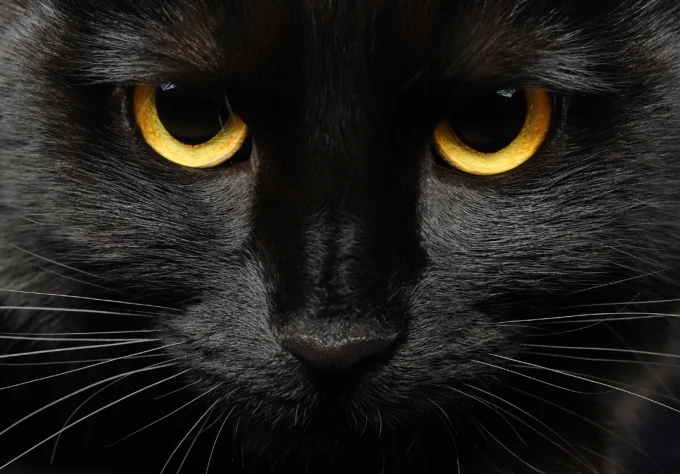
Source:usatoday.com
Even though the situation changed around the 1700s or 1800s, it was still a long road for cats to become house pets as we know them. And although cats were cared for as outdoor pets in the 19th and early 20th centuries, being fully indoor animals is a very recent development. The reason for that is simple: kitty litter wasn’t invented until the 1940s.
It’s worth noting that cats’ legal status changed with time. Cats and dogs were considered legally worthless until the last century – not even perceived as “property.” Nowadays, they are fully legally protected as property and are subject to additional protection laws.
The 20th century became a pivotal period of time for cats. Instead of simply being outdoor animals, they turned into full family members.
Nonetheless, experts say that cats are really only semi-domesticated, unlike dogs. one of the main differences between the domestication of cats and that of dogs is that cats are not entirely dependent on humans for their food. House cats still have the broadest hearing range in comparison to other carnivores, which makes them able to detect their prey’s movements; they also retain night-vision abilities and the ability to digest high-protein and high-fat diets. So even if they prefer to eat cat food given by humans, they will be able to go out and hunt if necessary.
Unlike dogs, who have undergone many physical changes since domestication and evolved to survive on an omnivorous diet, cats, in comparison, haven’t changed that drastically and still require a high-protein diet.
Despite their freedom-loving nature, having a cat brings the same positive effects as dogs. Cats can be as equally beneficial to a person’s health as dogs. Experts have proven that cat owners are less likely to have a health emergency, such as a heart attack, with their feline companion around, and cats have also been proven to help alleviate sleeping disorders, high blood pressure, and other health problems.
Although cats can be service animals, like dogs, they can qualify as emotional support animals. Emotional support animals can fly in the cabin of an aircraft and can live in “no pets” apartments. Still, they do not have the same level of access as service animals and cannot be taken everywhere service dogs are allowed. In this case, cats cannot be extended the same acknowledgment as service dogs.
The benefits of an emotional support cat are pretty extensive, and they can be helpful to one’s overall health and well-being. Of course, the results vary from person to person; the most commonly observed benefits of owning an emotional support cat are the following:
- anxiety relief;
- helps with depression;
- reduces post-traumatic stress;
- helps with ADD.
The two most obvious benefits of emotional support cats are anxiety and depression relief. Sometimes, we all feel overwhelmed, and having a friendly emotional support cat can be incredibly beneficial. In addition, many people who have post-traumatic stress disorder also find relief by having an emotional support cat around.
Cats can also serve as therapy animals. Therapy cats don’t live with humans but are brought into public places like assisted living, medical establishments, and schools to work with patients or residents as required.
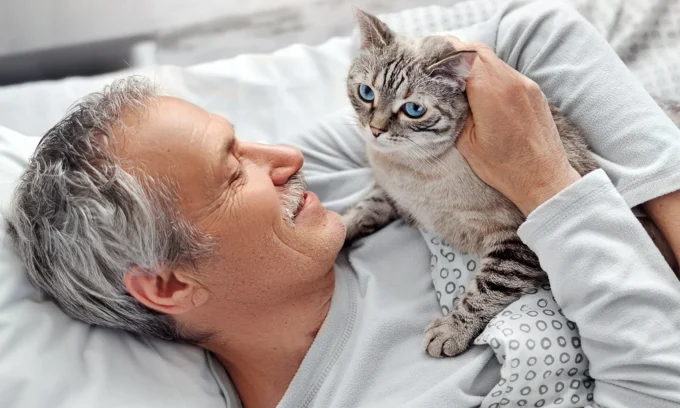
Source:helpguide.org
They are categorized into:
- Animal-Assisted Therapy (AAT) – cats in therapy programs help people who undergo physical therapy after surgeries or accidents or while regaining fine motor control skills in their limbs. Even a simple process like petting a cat can play a significant role in the process of rehabilitation. Therefore, interactions with therapy cats are parts of a treatment plan.
- Animal-Assisted Activities Therapy (AAAT): Cats in AAAT support patients, for example, in an assisted-living facility or nursing homes. Cats provide comfort and reassurance to the residents under their handlers’ supervision.
Therapeutic visitation is the most common means of animal therapy. Cats visit people at rehabilitation centers, hospitals, nursing homes, libraries, schools, or even prisons with their handlers.
Studies show that interacting with cats helps produce oxytocin. Its release increases during the interactions, leading to reducing stress and anxiety. In addition, research proves the benefits of holding or petting a cat in people with mental and emotional disabilities, anxiety, depression, or PTSD.
The most popular cat breeds are the following:
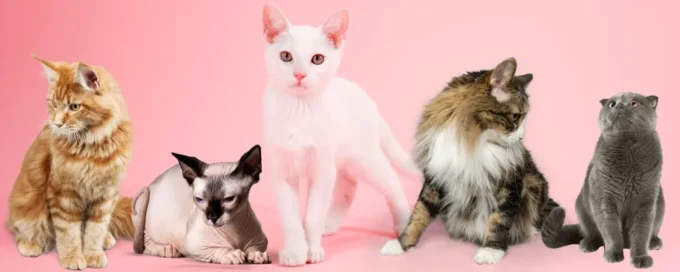
Source:catonsvillecatclinic.com
- The Siamese cat is not only gorgeous but also very smart. One has only to look into those clear blue eyes to fall in love almost at first sight. The coat of such cats is short and relatively dense, the color in the main part of the body is beige, and on the muzzle, the tips of the paws and tail are dark brown. Thailand is considered to be the birthplace of the breed. These cats are loved not only for their bright appearance but also for their character. Some people mistakenly believe that all Siamese are very aggressive, but in fact, this is not the case. Yes, the breed is characterized by a tendency to jealousy and a keen sense of possessiveness. But these cats are attached to the owner and loyal to him. And such animals are very active, inquisitive, and incredibly playful. Siamese does not tolerate loneliness and neglect and can be offended. But if you give your pet love and care, then he will be affectionate and kind.
- The Persian breed is considered one of the most popular and oldest breeds in the world. Many of these animals are attracted by an incredibly long and fluffy coat (although it can also be considered a big drawback) and a funny muzzle with a flattened nose. A Persian cat can be almost of any color. These animals cannot live outside the house, and away from people; in such conditions, they simply die. The Persian cat is reasonable, calm, and intelligent. They rarely disturb people, and if they want something, they will just sit next to the owner and stare at them intently. Such a pet will spend most of their lives on the sofa or in a cozy place specially designated for them, but they will be happy to play with their humans. Persians are not aggressive at all and are quite curious.
- Bengal cats are loved, first of all, for their fantastic color, resembling the color of a leopard. Initially, the Bengal breed was wild; these cats lived in the forests of Asia and were on the verge of extinction. But thanks to the American breeder Jean Mill, the breed was not only preserved but also transformed. A wild cat was crossed with a domestic cat, and the result was an unusual mixture of wild temperament and temperament of pets. Bengal cats have a pronounced hunting instinct, so they are happy to catch mice, but for some reason, they practically do not eat them. On the other hand, such a pet is very playful, especially when it comes to chasing some objects. Bengal cats are not aggressive if adequately raised. The kitten should be trained in the hands from the first days as these cats can turn into absolutely wild ones.
- Ragdoll. They are so calm and good-natured that they can be picked up, stroked, hugged, and humans don’t have to worry about the risk of being scratched. Ragdoll gets along well with children and implicitly tolerates all their whims and games. An interesting feature of the breed is a kind of inhibition, relaxation, and inertia of the muscles. Ragdoll is strongly attached to its owner and does not tolerate loneliness. In addition, cats of this breed are quite intelligent, thanks to which they quickly get used to the tray, understand some commands, and detect the intonation of human speech.
- The Maine Coon is a cat breed that was bred in the USA. The weight of an adult cat reaches 12-15 kilograms; the average length is 1 meter. The muzzle is elongated; the cheekbones are high, the ears are pretty large and erect. But, despite the formidable and even intimidating appearance, these animals have a relatively calm character. They are affectionate with their owners and with all the household members, but they are careful with strangers and strangers. Maine Coons are peaceful, docile, obedient, and intelligent. They don’t like enclosed spaces, so they don’t climb into cabinets and boxes. Such a pet will quickly get used to the tray and will use a scratching post instead of a sofa. These cats are very careful and reasonable, understand commands, and are easy to train.
- The Russian blue cat got its name due to the interesting color of the coat with a blue tint. Such animals have a dense coat of wool and a well-built body. The muzzle is slightly elongated; the ears are quite large and slightly apart. The Russian blue cat is an elegant and patient hunter who will wait for prey as long as necessary and eventually catch it. Although such a pet is peaceful, kind, and obedient, but they still love freedom and value independence. With strangers, these cats will behave very restrained and even wary but will allow almost everything to their owner. Representatives of this breed love comfort and affection, often purr and caress.
- The British breed is no less popular. The British cat is a real gentleman, and this is noticeable not only in appearance but also in the animal’s behavior. The appearance is very outstanding: short, dense coat, powerful paws, large body, rather voluminous, but at the same time a cute muzzle. Representatives of this breed are distinguished by their independence and waywardness. They appreciate their owners, but they will not tolerate liberties on their part. So if you decide to pick up a British cat or stroke them, they will most likely be dissatisfied and will respond to your impulse with resistance. But such a pet will be waiting for you from work and express their positive emotions, however, in a very peculiar way. A British cat can sit next to you and even “talk” you about how the day went. But the pet will tolerate loneliness calmly.
- The American breed began to gain its popularity back in the 60s of last year, but the ancestors of these cats came to the USA about three hundred years ago. The size of an adult animal is impressive, especially well-built males with powerful chest muscular paws. The color is mottled and interesting, and it can vary from white or gray to brown and almost black. All Americans are hardy and very brave; they easily jump from a great height and over considerable distances. In addition, representatives of this breed are excellent hunters, but at the same time, they are very friendly and affectionate towards their owners. These cats are quick-witted and well-trained.
- Manx or Manx cat is a pet whose homeland is the Isle of Man, which gave the name to the breed. A distinctive feature of Manx is the absence of a tail (it is the result of mutations). But it is worth noting that not all representatives are absolutely tailless, some of them still have a tail, but in most cases, it is short (although in some individuals, its length is as close as possible to normal). There is a particular gene in the DNA of such animals, but if you cross two individuals of this breed, then the presence of two genes will lead to the death of all offspring. By nature, the Manx is quite calm, friendly, and affectionate. They are benevolent not only to their owner but also to all family members. Activity is average, but these cats love to play. The pet will not demand increased attention to itself, but it will undoubtedly enjoy caresses and purr.
- The Sphinx. Although some are not enthusiastic about this breed, but it is prevalent. A distinctive feature is the absence of wool. These cats require care and love to be the center of attention. They can spend hours on end in the hands of the owner and are benevolent towards unfamiliar people. Sphinxes are quick-witted, intelligent, and very wayward. They do not tolerate loneliness well, but at the same time, they can climb on the closet and stay there all day, watching their owner from a height.
Birds: free-loving and beautiful
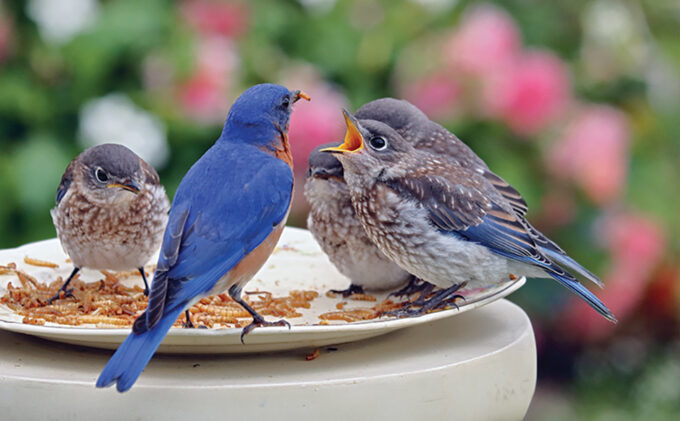
Source:amazon.ca
Birds make popular modern pets, but humans began keeping them for hundreds of centuries. In ancient China, people kept pheasants, and ancient Egyptians had zoos that included pigeons. Persian and Indian writers describe parrots and other birds in their works that date 3000 years ago.
Parrots were common pet birds in ancient Greece, and Romans kept mockingbirds in the entryway of their houses so they would announce new visitors. Ravens were also prized by Romans for their ability to talk. The Romans had elaborate garden aviaries, and they were responsible for introducing many new types of birds to Great Britain and Europe.
Only wealthy people could afford to keep birds in medieval Europe – the rulers and the Clergy would often keep parrots.
Around 500 years ago, canaries were considered luxury pets. When the Spaniards took over the Canary Islands, they discovered the lovely songbirds there and sold them at high prices to the wealthy of Europe. Later it came into fashion for a lady to receive visitors with a canary perched on her forefinger.
Birds remain popular pets even nowadays. All domestic birds can be divided into three categories: songbirds (that have a melodious voice), decorative (with gaudy plumage), as well as parrots, which are a kind of hybrid of the first two species.
Songbirds
People adopt these birds because of their unique singing style. They are not as common as parrots, but they are also often found as pets.
Blackbirds
Few of us have not heard the blackbird singing during a hike in nature – these unique birds have a surprisingly melodious voice, as well as a rather sharp mind. These birds are not adapted to being kept in cages; they need large aviaries, a lot of space for flying, a lot of sunlight, as well as permanent water baths.
Finches
Not a particularly common bird, however, very interesting. Finches are extremely restless, curious, very fond of different tricks. Unfortunately, only male finches can sing; their singing is very gentle and lilting.
Siskin
Very cute birds with a pleasant and melodious timbre. They adapt perfectly to a new place can get along well with other pets, including birds of a different variety. Unlike other domestic birds, they are tolerant of loneliness – they always have something to do. A feature of finches is their ability to imitate the singing of other birds. Therefore, it is not difficult to feed them, and care will not be a big problem for a beginner.
Goldfinches
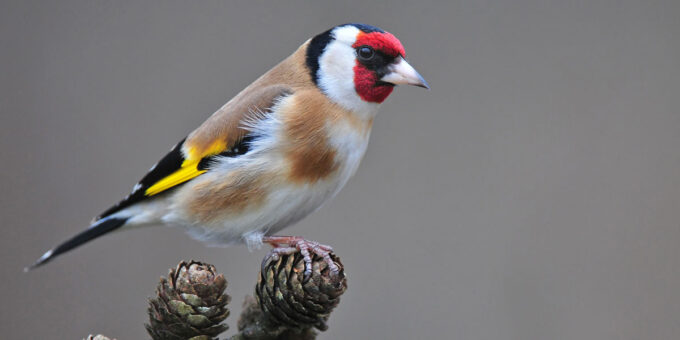
Source:arkwildlife.co.uk
These tiny birds with variegated plumage have a multi-stage and very melodious voice. Among other birds, they are distinguished by a sharp mind, but also a pugnacious character. Therefore, these pets should not be placed in aviaries with other birds, especially if they are birds of a completely different variety.
Buntings
Few people know about these singing birds – all because of their unsociability and long habituation to a new place. However, in the wild, bunting is a real enthusiast who loves to sing in a variety of manners. If you still manage to get such a pet, there should be no difficulties feeding or keeping it.
Jays
Among the other birds, the jays are the most talented. In addition to their original color and plumage, these birds can accurately imitate the singing of other birds and the voices of people and even reproduce the full-fledged sounds of other pets. This can be funny. However, it becomes a problem in families with several pets, where such an imitation reaches the level of ordinary teasers.
Nightingales
It is impossible to ignore this king of songbirds. Despite the seemingly absolutely nondescript appearance, these birds create real works of art with their singing. They do not get used to being kept at home very quickly and should be kept in very spacious enclosures.
Starling
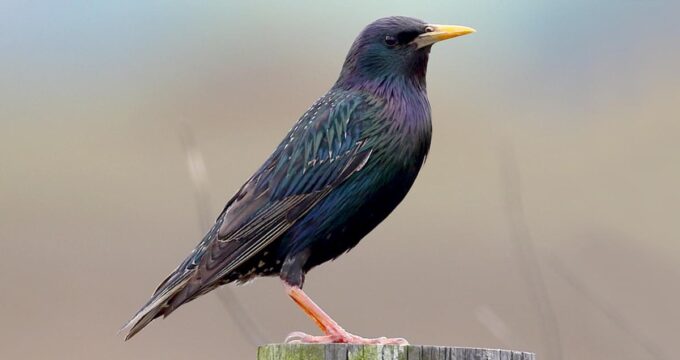
Source:allaboutbirds.org
An unpopular but very interesting option if you want to have a feathered pet. They are very inquisitive, intelligent, and friendly birds who will find a common language with everyone. For a lifetime, starlings can even learn up to a few words, however, problems often arise with their content. Starlings need a good spacious cage or aviary with a layer of earth of at least 3-4 cm, in which these birds love to dig.
Canaries
Canaries are a universal kind of songbird in all respects. They are very beautiful, melodious, and sociable pets that will never make the owner bored. For their maintenance, you do not need a particularly large cage, and canaries are not picky about the type of food. The main thing for them is that the owner loves them and pays the maximum attention. Canaries feed mainly on grains or seeds, however, they do not disdain insects in the wild.
Parrots
Today parrots are considered universal pets when it comes to birds. They are beautiful, visionary, adore communication, and most often become real family members.
Aratinga
Many inexperienced breeders confuse these amazing birds with macaws. These parrots got their unusual name due to their exceptional multicolored coloring. The main colors in the coloring of the aratinga are yellow and orange, but the saturation of these shades depends on the variety of the parrot. The aratinga’s dwelling should be spacious enough for him to spread his wings there.
Budgies
Budgies are considered the most affordable compared to other domestic species. These little birds can be found in any nursery; they do not require large cages and get used to a new place very quickly. The budgie can be taught to pronounce up to 10 separate phrases. Another advantage of these parrots is the variety of their colors. The plumage of these birds can be yellow, green, blue, or mixed.
Cockatiel
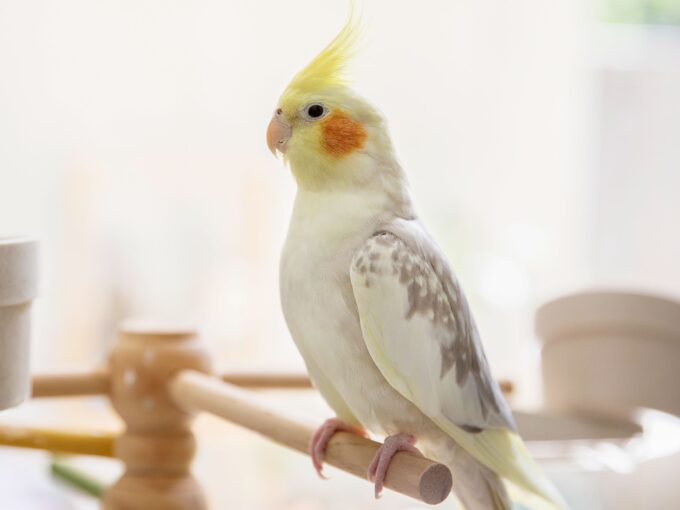
Source:thesprucepets.com
These parrots are considered ideal for breeding in absolutely any condition. This is a very sociable, restless, and friendly bird, which can be trained to pronounce up to 100 words in a lifetime. Caring for these birds does not create many problems; however, the diet of corellas, in addition to the main food, requires a wide variety, including fruits, vegetables, and vitamins.
Lovebirds
It is advised to buy these parrots in pairs or constantly pay maximum attention to them. The name “lovebirds” appeared due to the tendency of these birds to constantly take care of their partner. Absolutely anyone can cope with feeding and caring for lovebirds. However, the home of lovebirds should be spacious and clean.
Cockatoo
Among other parrots, the cockatoo is considered a real long-lived. These amazing parrots with a characteristic crest on their head can live up to 50 years at home. Cockatoos differ from others with incredibly developed intelligence and simply a colossal need for attention. Such a parrot at home is like a small child who is trying with all their might to make you play with them. Thanks to their sharp mind, they are able to memorize up to several hundred words in a lifetime.
African gray parrot
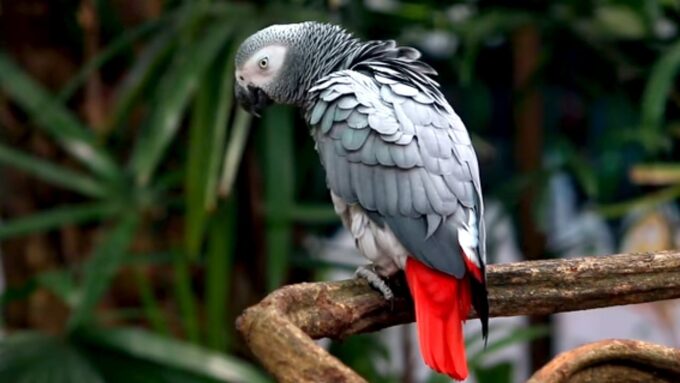
Source:youtube.com
African gray parrots are very rare in ordinary families. All because of, at first glance, the nondescript coloring of these parrots and the huge price even for the youngest individuals. In fact, it is an incredibly intelligent bird that perfectly imitates human speech and is able to memorize more than 100 words in a lifetime. African gray parrots are as sociable as other parrots; they love games, tricks, and all kinds of toys.
Macaw
Many consider macaws to be kings among all other parrots. They are distinguished by a very colorful and saturated color, extreme longevity, as well as an incredibly sharp mind. With insufficient attention from the owner, macaws become uncontrollable and, with the help of their powerful beak, can harm furniture throughout the apartment, spoil the cage and even terrorize other pets. If the owner takes good care of such a pet and spends a lot of free time with him, the macaw becomes a full-fledged family member who loves to be the center of attention.
Amazon
This kind of parrot is suitable for breeders who are not ready to keep large birds. Amazons have a sharp mind an original appearance and quickly take root in a new place. These parrots get used to people very quickly and do not tolerate being alone for a long time. There is only one disadvantage in caring for these birds – their large and very strong beaks can spoil both furniture and the cage (if it is not metal but polymer).
Decorative birds
Bullfinch
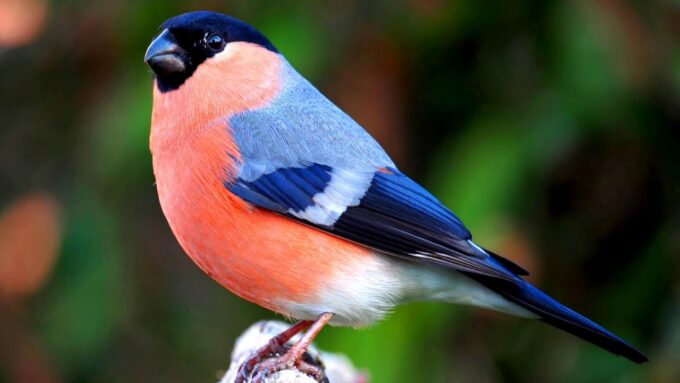
Source:pinterest.com
These birds began to be bred thanks to their stunning bright plumage. This kind of bird gets along well with people and quickly adapts to the conditions of the cage. Unfortunately, nature has not endowed these birds with good hearing and singing, but they can still make melodious sounds.
Raven, magpie, and crow
A good choice for original owners who want to see a real companion in a bird. These birds are not only very smart, which they show almost constantly, but also talented. They perfectly understand the mood of the owner can pronounce individual words or phrases. The care of these birds is very fastidious – a cage will not work here, you will need a spacious and very durable aviary, which should always be kept clean. With improper upbringing, these birds can be very irritable and capricious.
Owl
Perhaps the quietest and most taciturn of all feathered pets. These birds do not like increased attention and prefer to spend most of their time alone with themselves. The main activity of owls begins at night, which becomes a big problem for inexperienced breeders. Unfortunately, owls are very difficult to care for – they need strictly defined and expensive food (mice, rats, crickets), as well as a huge space.
Firefinch
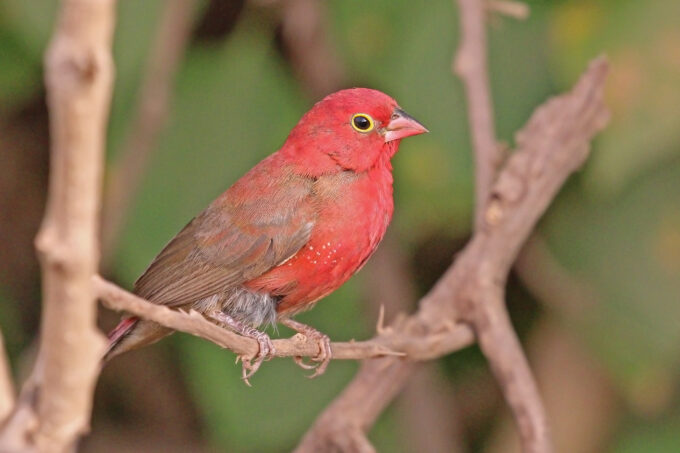
Source:youtube.com
Probably, this is the most unpopular option among all types of domestic birds. In addition to their beautiful red plumage, these birds are no different from street birds. Unfortunately, firefinches hardly get used to a new place and rarely recognize a real friend in the owner.
Firetails
These small birds with a red beak are distinguished by a very friendly and restless character. Some attribute firetails to songbirds; however, these pets emit only individual characteristic sounds that cannot be called singing. Since these birds come from a tropical climate, low temperatures and drafts are not allowed in their keeping.
Pigeons
If the rest of the decorative birds are started only due to their appearance, then some varieties of pigeons are also actively used for meat production. In addition, everyone knows about carrier pigeons and what they are capable of. In rare cases, such birds can fly thousands of kilometers and will not make a mistake in choosing a route.
Read more on: https://recommend24.com/category/pet-supplies/

